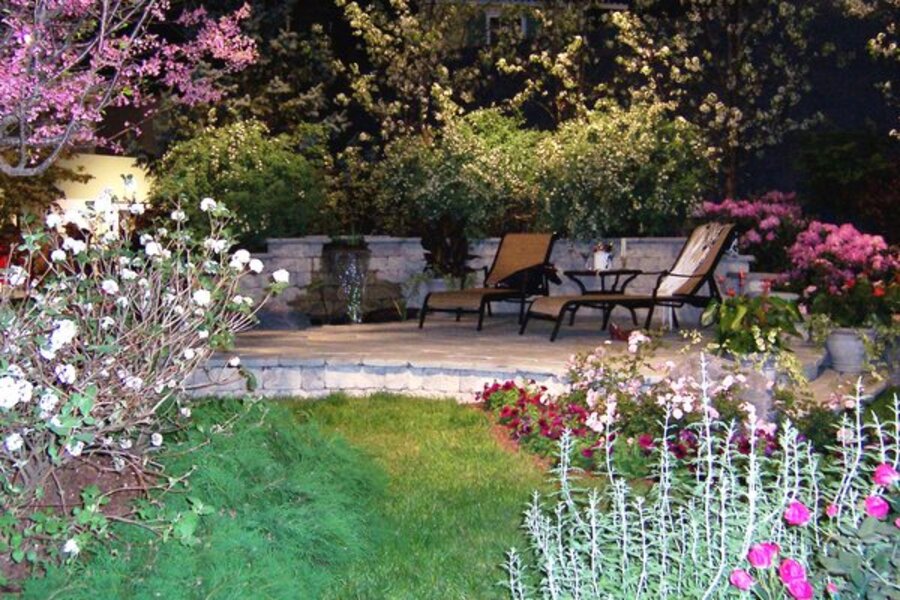Five tips for getting the most out of flower shows
Make no mistake. It isn't by chance that flower and garden shows are scheduled at the very time cabin fever is at its highest pitch. Aren't we all just itching to see demonstration gardens in full bloom and to spend some of our hard-earned money on unusual ornaments and colorful plants?
But, with acres of flowers, hundreds of vendors, thousands of juried floral displays, and miles of aisles to walk, these shows can also be exhausting. Here are five quick tips to help you get the most from your day and return home with a smile, not a frown.
1. Plan ahead. Review the show's website or brochure and decide on your main reason for going. Schedule that first. Scan the layout map to see where the gardens or vendors that interest you are located. Settle on which talks are an absolute must-hear, and find a spot, such as the café, where you can rest up for round two. (Selecting at least one morning and one afternoon seminar will give your legs and back a break and help you make it through the whole day.)
Ask vendors if they have a holding area where you can store your purchases, so that you can cruise the rest of the show without feeling rushed or encumbered.
2. Wear comfortably cushioned flat shoes. They are a must, since most shows take place in structures that have concrete floors. While this might be great for installing the gardens and quick clean-up after the show, they take a heavy toll on visitors' feet and backs. In addition, some demonstration gardens will have flagstone or boardwalk-style paths that make for uneven walking, and may catch narrow heels.
3. Dress appropriately. This means different things to different people in different locales, but wear comfortable, layered clothing that won’t be ruined by a soil spill from a tumbling flowerpot, or water splash from an overactive fountain. Temperatures in convention centers can fluctuate wildly, so you may feel cold when the hall is relatively empty, but uncomfortably steamy as the number of attendees increases throughout the day.
4. Take the minimum necessary and make it easy to carry. Even a relatively light handbag will begin to feel heavy after two hours. Put a fold-up tote in a backpack and you should have plenty of room to store your purchases and handouts. Backpacks are easier to maneuver and more crowd-friendly than wheelies are. If you're taking a larger camera, put your driver's license, charge card, a small amount of cash, and other necessities into the camera bag, so you can navigate with just a single carry-all.
5. Be courteous and mindful of other attendees. You'll be sharing this space with thousands of other people. Don’t step in front of someone’s camera when they’re all set for the perfect shot or, if you’re the photographer, be patient until the crowd thins out a bit. Don’t stand in front of a garden, or stop on a narrow pathway to chat, while hundreds of people are lined up behind you. It’s tough to hear in these cavernous exhibit halls, so make it easier on everyone by heading off to a quieter spot to make lunch plans, catch up with old friends, etc.
Flower and garden shows are like spring break for gardeners – a time to forget about the daily grind, recharge your batteries, and enjoy a day filled with fun. Make room in your schedule for at least one this year:
Feb. 10-13 Maymount Flower and Garden Show, Richmond, Va.
Feb. 17-21 New Jersey Flower and Garden Show, Edison, N.J.
March 6-13 Philadelphia Flower Show, Philadelphia
March 17-20 Springfest Flower & Garden Show, Augusta, N.J.
March 5-April 25 New York Botanical Garden Orchid Show, Bronx, N.Y.
-----
Lois de Vries, who lives in rural Northwestern New Jersey, is a field editor for Better Homes and Gardens and Country Gardens magazines and has been a contributing editor for other national publications. Lois is a popular speaker at regional flower shows and garden clubs. She was awarded the Jefferson Presidential Award for more than a decade of public service in environmental work and appointed to the Garden Writers of America Sustainability Task Force. She writes online about garden design and the environment and a holistic approach to gardening. You can also follow her on Twitter and Facebook .





